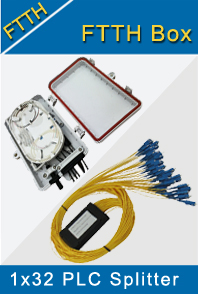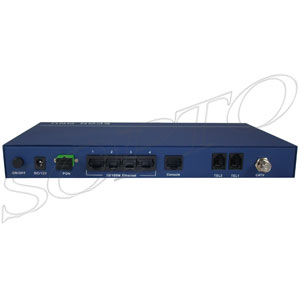-

- Sopto Home
-

- Special Topic
-

- FTTH Knowledge
-

- How to Make Sure Your FTTH GPON Installation is Ready for Turn-U
FTTH Knowledge
- Solving the FTTH Rollout Problem in Multiple Dwelling Units
- WDM PON Introduction FAQ
- A Simple Overview of Optical Power Meter
- ODN is based on PON FTTH Optical Cable Network of the Device
- Using an OTDR to be an Expert in Fiber Link Testing
- How FTTH Broadband Works?
- Connections among Fiber Terminal Boxes & Patch Cables & Pigtails
- Easy to Install a Fiber Terminal Box
- What is Arrayed Waveguide Grating?
SOPTO Special Topic
Certificate



Guarantee
Except products belongs to Bargain Shop section, all products are warranted by SOPTO only to purchasers for resale or for use in business or original equipment manufacturer, against defects in workmanship or materials under normal use (consumables, normal tear and wear excluded) for one year after date of purchase from SOPTO, unless otherwise stated...
Return Policies
Defective products will be accepted for exchange, at our discretion, within 14 days from receipt. Buyer might be requested to return the defective products to SOPTO for verification or authorized service location, as SOPTO designated, shipping costs prepaid. .....
Applications

Sopto supply the best FTTH solutions for your network!
SOPTO Products
- Fiber Optic Transceiver Module
- High Speed Cable
- Fiber Optical Cable
- Fiber Optical Patch Cords
- Splitter CWDM DWDM
- PON Solution
- FTTH Box ODF Closure
- PCI-E Network Card
- Network Cables
- Fiber Optical Adapter
- Fiber Optical Attenuator
- Fiber Media Converter
- PDH Multiplexers
- Protocol Converter
- Digital Video Multiplexer
- Fiber Optical Tools
- Compatible
Related Products
Performance Feature
FTTH Knowledge
Recommended

How to Make Sure Your FTTH GPON Installation is Ready for Turn-Up?
To accept the fiber installation for a GPON network before turn-up, at a minimum, the insertion loss (IL) needs to be tested at each endpoint. For each PON, this means testing at the optical line terminal (OLT) and at each optical network terminal (ONT). The IL at each endpoint needs to meet the vendor specifications for the GPON equipment being installed.
Typically, this is between -28dBm and -8dBm at the OLT and between -27dBm and -8dBm at each ONT. These tests are normally conducted using an optical light source (OLS) and an optical power meter (OPM). From the OLT to each ONT, the tests should be conducted at 1490nm and, additionally, at 1550 nm if an RF overlay is being deployed. From each ONT to the OLT, the test should be conducted at 1310 nm.

Other tests also can be specified as part of a certification process. Optical return loss (ORL), for example, can be tested using an optical return loss test set (OLTS) or an optical time domain reflectometer (OTDR). If tested, the ORL should be greater than 32dB. If there are intermediate test points available in the network, such as connectorized splitters or patch panels, individual segment IL and ORL can be tested and compared against the specified loss budget.
Requiring a recorded OTDR trace as part of the final acceptance criteria is also good practice because it not only characterizes the network in terms of distance, continuity and relative quality of splices and connectors, but it also provides a baseline reference for any future troubleshooting activities.
Many testing equipment vendors now manufacture combination test kits that are specifically designed for fiber to the home (FTTH) networks and integrate the functionality of an individual OLS, OPM, OLTS or OTDR. These kits can automate much of the acceptance testing, store the results and create professional test reports.
For more info, please browse our website. For the newest quotes of our products, please contact a Sopto representative by calling 86-755-36946668, or by sending an email to info@sopto.com.



